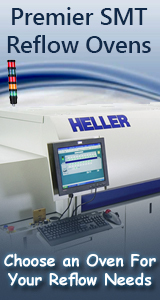Printed Circuit Board Assembly & PCB Design Forum
SMT electronics assembly manufacturing forum.
- SMTnet
- »
- Electronics Forum
- »
- BGA Voids
BGA Voids
Views: 5600
![]() What causes BGA voids over 25%? Have recommended profile for...
- Feb 11, 2008
by
Larry D
What causes BGA voids over 25%? Have recommended profile for...
- Feb 11, 2008
by
Larry D
![]()
![]()
![]() While you're waiting for others to reply, search the fine SM...
- Feb 11, 2008
by
davef
While you're waiting for others to reply, search the fine SM...
- Feb 11, 2008
by
davef
![]()
![]()
![]() Hi,
Have you checked out the BGA datasheet and see what p...
- Feb 12, 2008
by
aj
Hi,
Have you checked out the BGA datasheet and see what p...
- Feb 12, 2008
by
aj
![]()
![]()
![]() I must ask the silly question- are you sure you deposited th...
- Feb 12, 2008
by
mparker
I must ask the silly question- are you sure you deposited th...
- Feb 12, 2008
by
mparker
![]()
![]()
![]() Thanks for the spare change.
Questions are good and I did m...
- Feb 12, 2008
by
Larry D
Thanks for the spare change.
Questions are good and I did m...
- Feb 12, 2008
by
Larry D
![]()
![]()
![]() The causes of voids are extremely paste dependent. I did a ...
- Feb 13, 2008
by
ScottE
The causes of voids are extremely paste dependent. I did a ...
- Feb 13, 2008
by
ScottE
![]()
![]()
![]() Larry, from my days of working for a Telecom. company, Bellc...
- Feb 13, 2008
by
Dirk Nuendyke
Larry, from my days of working for a Telecom. company, Bellc...
- Feb 13, 2008
by
Dirk Nuendyke
![]()
- SMTnet
- »
- Electronics Forum
- »
- BGA Voids







